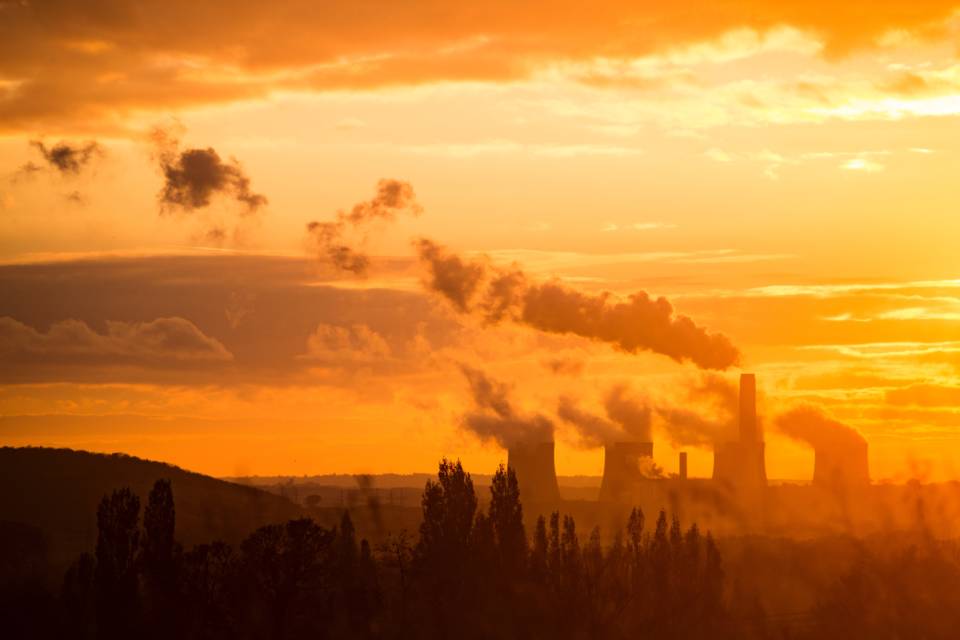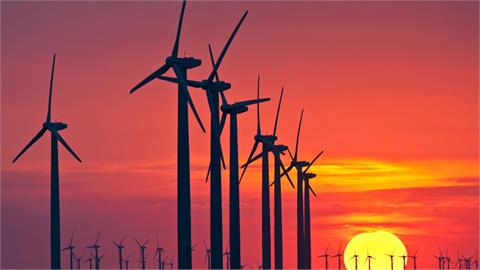In the first eight months of 2019, growth in India’s CO2 emissions slowed down sharply, putting the country on track to its lowest annual increase in nearly 20 years. Our analysis, based on data from various ministries responsible for electricity, coal
In the first eight months of 2019, growth in India’s CO2 emissions slowed down sharply, putting the country on track to its lowest annual increase in nearly 20 years. Our analysis, based on data from various ministries responsible for electricity, coal, oil, gas and foreign trade, shows that emissions increased by 2% in the first eight months of the year, a lower rate than any annual increase since 2001.
The main reason was a slowdown in the expansion of coal-fired electricity generation, the analysis shows, with renewable output surging and demand growth slowing. Oil demand growth has also slowed this year, helping keep the increase in India’s emissions to just 2%, against an average of 5% per year over the past decade.
The trend in India’s CO2 emissions is of global importance. Since 2013, the country has accounted for more than half of the increase in global CO2 output. Slower growth in coal-based power generation will also benefit the country’s air quality efforts, as essentially all coal-fired power plants in India lack pollution controls commonly required in, say, the EU and China.
Slowest growth
India’s CO2 emissions have doubled since 2005, driven by a rapid expansion in coal use. The growth is poised to slow down in 2019, however, as the chart below shows. Electricity generation from coal slowed markedly in the first eight months of 2019, putting the country on track to its slowest power-sector emissions increase in three decades. This was due to a surge in renewable power generation and a slowdown in demand growth, which means the share of fossil fuels in meeting power demand growth will be the lowest in the past 30 years
As a result, India’s coal use (black area in the chart) increased relatively slowly in the first part of 2019. Oil demand growth moderated, too (blue), meaning CO2 emissions in the first eight months of the year increased by an estimated 2.0% . The 2% growth in India’s CO2 emissions expected in 2019 is lower than the annual increase seen in any year since 2001.
Renewable expansion
Some 75% of India’s electricity is still generated from fossil fuels, meaning the country has one of the world’s dirtiest electricity systems. The power sector is also responsible for half of India’s CO2 emissions. Since 2000, electricity demand has grown at an increasingly rapid pace – as shown in the chart below bottom right– and most of this increase has been met by rising coal generation (top left).
In recent years, however, rapid growth in renewable generation has seen coal meet a shrinking share of the increase in overall demand. In the first six months of 2019, wind (top right), solar (bottom left) and hydro (top centre) met a record 70% of the increase in electricity demand, according to our analysis of data compiled from Central Electricity Authority monthly reports.
Annual change in electricity generation, terawatt hours, broken down by fuel and in total (bottom right). "Others” includes other renewable sources, oil, gas and nuclear, which made very small contributions. The data suggests that wind generation rose by 17% in the first six months of 2019 compared to the same period a year earlier, with solar up 30% and hydro increasing by 22%.
The relative contributions to rising electricity demand this year are shown in the chart, below, with wind, solar and hydro meeting 70% of the increase and coal making up the remainder. Contributions to the increase in India’s electricity demand in the first half of 2019, by fuel, terawatt hours.
Increased hydropower production compared with the first half of 2018 was due to annual variation in operation. The growth in generation from wind was only partially accounted for by increased capacity, with windier conditions explaining the difference. The total capacity of installed wind turbines increased 5% from June 2018 to June 2019, with new installations down by a third in the first six months of the year. Wind conditions during July and August were less favourable than last year, so an increase in wind power generation will be moderated during the second half of the year.
There are also fresh indications of problems with electricity generated from wind and solar power being discarded ("curtailed”) when this would require other types of power plants to reduce output. These issues do not appear to have cut into generation during the first half of the year, as output growth was in line with average wind speeds and capacity growth. However, curtailment can seriously harm investor confidence far before it substantially eats into electricity volumes fed into the grid, as it puts their income streams at risk.
Emissions from industry and oil consumption slowing
While the power sector has been the largest contributor to India’s greenhouse gas emissions, its industry and oil consumption have also been seeing significant growth in CO2 output as the country’s economy expands. Coal fired power station in Bushra near Allahabad, India. Credit: Hans-Joachim Aubert / Alamy Stock Photo.
Industrial coal use fell dramatically in 2017 after the government demonetised banknotes, affecting the construction sector. Industrial coal use rebounded in 2018 but growth appears to have petered out this year: The combined total of coal sales from state-owned mines to consumers outside the power sector and imports of coking coal and coke fell 14% in 2017 and rose 15% in 2018. But it increased by just 3% in the first eight months of 2019.
Oil demand growth also slowed to 2.6% in the first eight months of the year, compared with 4.6% last year, and 5% on average over the past 10 years. Growth in diesel demand fell (top left chart, below), indicating a fall in freight volumes growth. Use of petcoke, a major source of oil product consumption growth in recent years, continued to fall after an import ban was put in place (bottom centre). Petcoke is an oil refining byproduct, and an even higher-emitting alternative to coal; India is its largest global user. Demand for naphtha– a lighter fraction of refined crude oil used in the chemical industry – fell too, likely due to slower growth in petrochemicals, as did other products used in industry. Gasoline consumption growth continued unabated at 10%.
This year’s slowdown in electricity demand and coal-based electricity generation underscores a long-term issue of grossly overestimated power demand growth, dating back to at least 2011, during the preparation of the country’s 18th Electric Power Survey. Demand growth during the past decade has been significantly lower than expected, particularly in industry, which has led to overbuilding of coal-fired capacity and fewer running hours for coal plants.
Actual and projection electricity demand in India, terawatt hours. Source: Projections from 18th (2011) and 19th (2017) Electric Power Surveys; actual demand from Central Electricity Authority except 2019-20 projected based on growth in power generation. Note the y-axis does not start at zero.
By the end of the 2018-19 financial year, actual electricity demand was 22% lower than projected in the 2011 survey. This means India has been planning for much higher demand than it actually needed to, with that gap equal to the output from more than 50,000 megawatts (MW) of coal-fired capacity, or 50 large units.
As in many other countries around the world, this means the coal plants that have already been built are running far fewer hours than expected, indicating overcapacity. In India, another 3,300MW of coal-fired power capacity was added in the first six months of 2019, limiting running hours–or "load factors”. Since 2009, overcapacity and weaker than expected demand growth has pushed Indian coal plant load factors from close to 80% down to around 60%, as the chart below shows. Coal plant load factors in India since 2009-10, percent.
Slowing demand for coal-fired power generation has resulted in a run of announcements about new coal plant construction plans being stopped. The first to make such an announcement was Gujarat, the Indian state with the second-largest coal-fired capacity in the country, whichsaidit would aim to meet power demand growth by scaling up renewables.
A similar announcement followed from Chhattisgarh, the largest coal-mining state. The country’s largest power generator has also NTPC said it would not undertake new coal-power projects, while announcing investment in a major solar park.
Renewable energy ambitions
Pulling back from building new coal plants is logical in light of India’s renewable energy ambitions. Prime minister Narendra Modi recently announced a target of 450GW of non-fossil energy. This compares with current solar, wind and biomass capacity of around 74GW and a previous target of 175GW by 2022. While Modi’s announcement lacked specifics– including a target date– the 450GW figure corresponds to the capacity of solar, wind and biomass power plants by 2030 in a February 2019 Central Electricity Authority (CEA) report on "optimum” generating capacity for that year.
A capacity of 450GW represents a substantial scale-up from the current capacity of 74GW at the end of 2018. Meeting it would mean average annual installations of 32GW of renewable capacity each year for the next 12 years. Additions of solar, wind, biomass and small hydro – with the majority coming from wind and solar – would have to significantly exceed the 11GW achieved in 2018.
India’s current target is 175GW of renewable power capacity. This includes small hydro, but excluding large hydro and nuclear. The target requires annual installations of more than 20GW per year, but the country seems to be falling off track to meet this target, despite strong growth in annual installations. Against this background, increased ambition towards 2030 shows that the country’s policymakers are still intent to scale up clean energy.
The implications of the 450GW renewable energy target for the power sector – and even for global emissions – would be significant. If it is realised, the increase in annual power generation coming from renewable sources would amount to around 620 terawatt hours (TWh) per year by 2030, equal to almost half of current power demand in India, even assuming no improvement in capacity factors.
Another 120TWh or so of annual generation would be delivered by the increases in nuclear and hydropower projected by the CEA by 2030. This would go up to 170TWh if India targets 20GW of new nuclear capacity by 2030 – per a recent statement from the country’s highest-ranking official on nuclear issues – instead of the approximately 10GW suggested earlier by the CEA. These additions would mean that non-fossil generation could cover rising electricity demand – if it grew by up to around 4% per year. Any demand growth above that level would be met by fossil fuels, primarily coal.
As power generation grew 6% each year over the past decade and is likely to be moderated going forward, the 450GW target could see two-thirds or more of electricity demand growth met from non-fossil sources, compared with just 20% over the past decade.
Increase in non-fossil electricity generation in India by period (columns), and increase in total electricity generation (points). Comparing past rates of generation growth to projected growth in non-fossil power generation in the next 10 years (rightmost column) indicates that India’s newly announced non-fossil electricity target could allow most, or all, of incremental electricity demand to be covered from non-fossil sources, mainly wind and solar, if the capacity targets are met and the annual increase in power demand stays at historic average levels.
While the targeted expansion of renewable energy generation might appear ambitious in light of near-term challenges, there are robust economic drivers backing the targets: wind and solar power plants generate electricity at a lower cost than new coal-fired power plants, as well as a large share of the existing fleet. India’s burgeoning renewable energy sector is already unseating coal as the go-to source for affordable electricity generation. While Modi’s plans for accelerated expansion face predictable obstacles, success could mean stemming the rise in coal use and emissions from India’s power sector, which has been a major driver of global CO2 emissions growth and regional air pollution.
Lauri Myllyvirta is an energy and air pollution analyst covering air pollution and fossil-fuel trends globally. Sunil Dahiya is an analyst with Greenpeace East Asia who tracks India’s progress towards its pollution targets.




